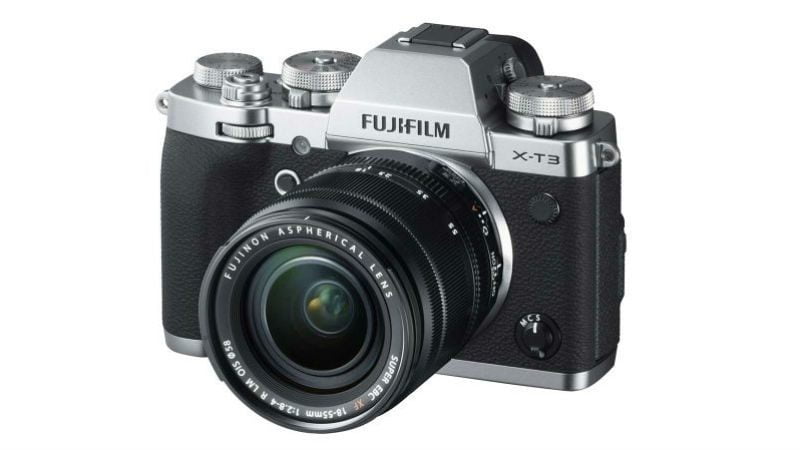
Fujifilm’s new mirrorless XT-2 camera brings several upgraded features
Fujifilm X-T3 has been launched as the latest addition to the company’s lineup of mirrorless cameras. Fujifilm had launched the X-T1 over four years ago and followed it up with X-T2 in 2016, and now it has announced the next iteration. The latest premium mirrorless camera will take on the latest announcements from the likes of Nikon and Canon. The X-T2 successor comes with little upgrade in term of resolution, but it improves the processing power and autofocus performance.
The X-T3 starts shipping on September 20 and is priced at $1,499.95 (roughly Rs. 1,07,900) in the US for just the body or $1,899.95 (roughly Rs. 1,36,700) for the camera and the XF18-55mm kit lens. The X-T3 actually costs $100 less than the X-T2 did at launch.
The Fujifilm X-T3 is a compact mirrorless camera that packs a newly-developed back-illuminated 26.1-megapixel X-Trans CMOS 4 sensor and the X-Processor 4 image processing engine. The company claims that the processing speed is approximately 3 times faster than that of the current models. Fujifilm claims is the first APS-C mirrorless camera capable of 4K/60fps 10-bit video capture. Furthermore, the sensitivity of ISO 160, previously available only as extended ISO, is now part of the normal ISO range. The X-T3 uses the newly-developed X-Processor 4 image processing engine to add the new “monochrome adjustment” function to the Film Simulation modes.
Meanwhile, the X-Trans CMOS 4 sensor has 2.16 million phase detection pixels, more than 4 times compared to current models, the company claims. It expands the phase detection AF area to the entire sensor. Fast and accurate phase detection AF can be used even on a subject that is positioned away from the centre of the frame. The low-light autofocus limit has also been extended from -1EV to -3EV, to let the camera use phase detection AF in low light conditions. ISO range is from 160-12800 but can be extended from 80-51200.
The X-T3 features a high-resolution 3.69-million-dot Evolved electronic viewfinder (EVF) with a high magnification ratio of 0.75 times. The display time lag is 0.005 seconds and refresh rate is approximately 100fps. Also, there is a new ‘Sports Viewfinder mode’ to capture moving subjects. When using this mode, the X-T3 captures the image of a subject in the area equivalent to 16.6-megapixel, marked in the viewfinder.
The Fujifilm X-T3 features a new ‘Pre-Shoot; function, in which the camera starts shooting a scene when the shutter button is half-pressed and records it at the moment when the shutter button is fully pressed.
Fujifilm claims that the sensor’s read speed is about 1.5 times faster than other models and it enables fast 17ms reading of 4K/60fps video. Additionally, the rolling shutter distortion has been reduced for better recording of fast-moving subjects. The camera’s support for 10-bit colour depth boosts the amount of colour information by 64 times compared to 8-bit depth, the company stated. This is combined with 400 percent (roughly 12 stops) dynamic range for capturing materials of rich gradation, such as a sunset landscape. Notably, the battery in Fujifilm X-T3 is rated for 390 shots per CIPA standards.
[“Source-gadgets.ndtv”]




